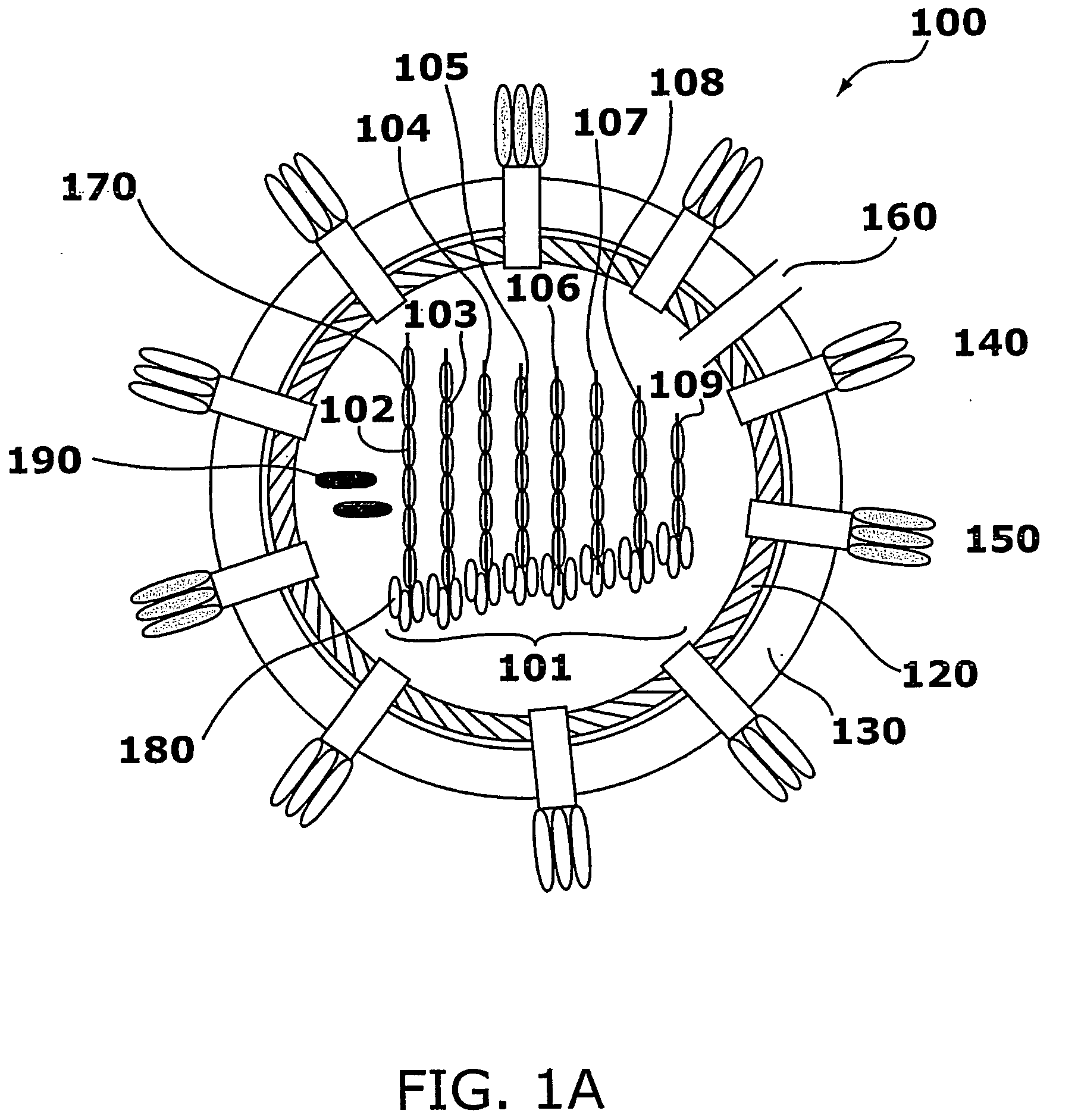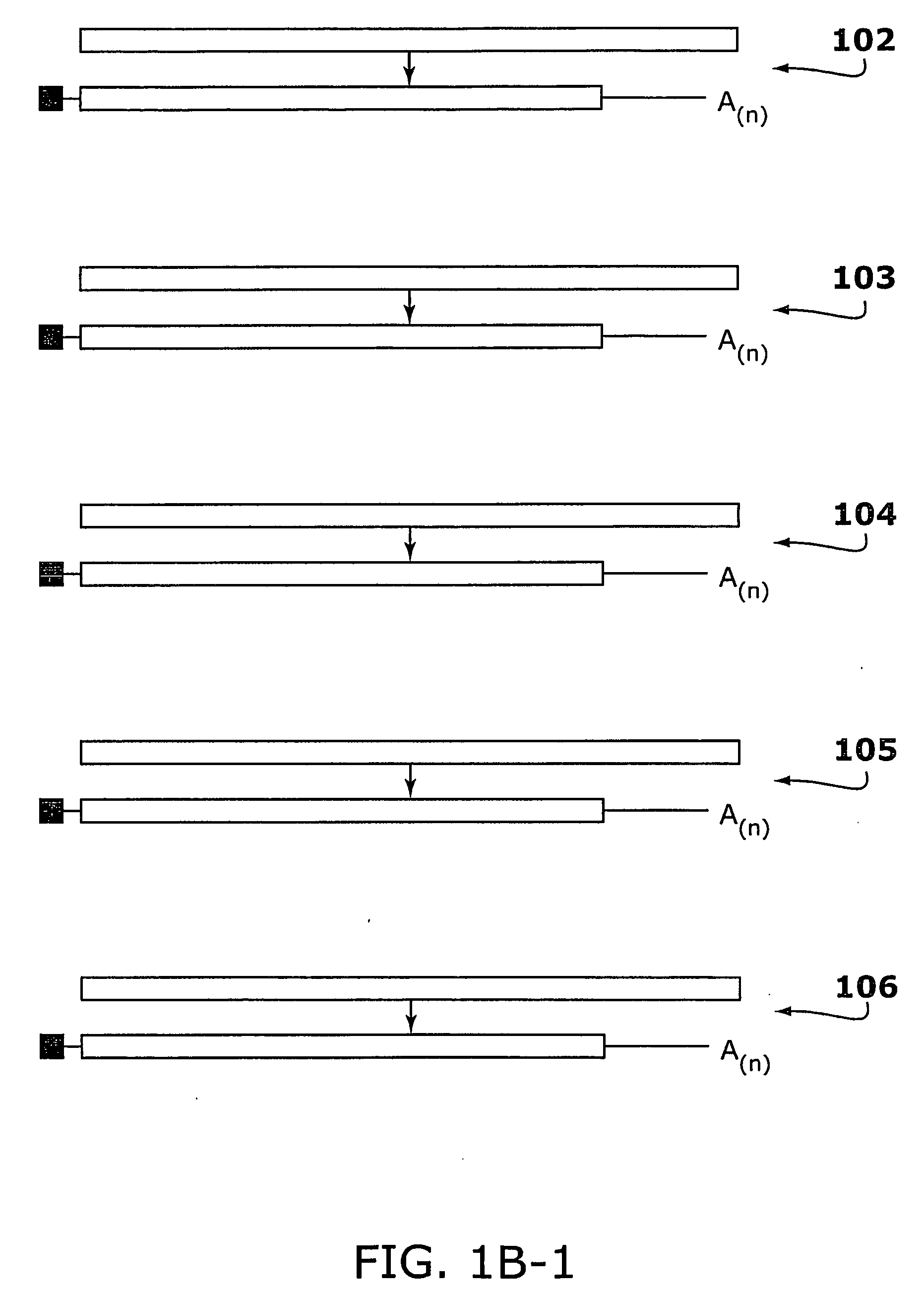Influenza Therapeutic
a technology for influenza virus infection and treatment, applied in the field of most widely spread infections worldwide, can solve the problems of ineffective treatment of influenza virus infection, limited value of existing vaccines, and less than optimal
- Summary
- Abstract
- Description
- Claims
- Application Information
AI Technical Summary
Benefits of technology
Problems solved by technology
Method used
Image
Examples
example 1
Design of SiRNAs to Inhibit Influenza A Virus
[0255]Genomic sequences from a set of influenza virus strains were compared, and regions of each segment that were most conserved were identified. This group of viruses included viruses derived from bird, swine, horse, and human. To perform the comparison the sequences of individual segments from 12 to 15 strains of influenza A virus from different animal (nonhuman) species isolated in different years and from 12 to 15 strains from humans isolated in different years were aligned. The strains were selected to encompass a wide variety of HA and NA subtypes. Regions that differed either by 0, 1, or 2 nucleotides among the different strains were selected. For example, the following strains were used for selection of siRNAs that target the NP transcript, accession number before each strain name refers to the accession number of the NP sequence and the portions of the sequence that were compared are indicated by nucleotide number.
[0256]The orde...
example 2
siRNAs that Target Viral RNA Polymerase or Nucleoprotein Inhibit Influenza A Virus Production
[0265]Materials and Methods
[0266]Cell Culture. Madin-Darby canine kidney cells (MDCK), a kind gift from Dr. Peter Palese, Mount Sinai School of Medicine, New York, N.Y., were grown in DMEM medium containing 10% heat-inactivated FCS, 2 mM L-glutamine, 100 units / ml penicillin, and 100 μg / ml streptomycin. Cells were grown at 37° C., 5% CO2. For electroporation, the cells were kept in serum-free RPMI 1640 medium. Virus infections were done in infection medium (DMEM, 0.3% bovine serum albumin (BSA, Sigma, St. Louis, Mo.), 10 mM Hepes, 100 units / ml penicillin, and 100 μg / ml streptomycin).
[0267]Viruses. Influenza viruses A / PR / 8 / 34 (PR8) and A / WSN / 33 (WSN), subtypes H1N1, kind gifts from Dr. Peter Palese, Mount Sinai School of Medicine, were grown for 48 h in 10-day-embryonated chicken eggs (Charles River laboratories, MA) at 37° C. Allantoic fluid was harvested 48 h after virus inoculation and stor...
example 3
SiRNAs that Target Viral RNA Polymerase or Nucleoprotein Inhibit Influenza A Virus Production in Chicken Embryos
[0286]Materials and Methods
[0287]SiRNA-oligofectamine complex formation and chicken embryo inoculation. SiRNAs were prepared as described above. Chicken eggs were maintained under standard conditions. 30 μl of Oligofectamine (product number: 12252011 from Life Technologies, now Invitrogen) was mixed with 30 μl of Opti-MEM I (Gibco) and incubated at RT for 5 min. 2.5 nmol (10 μl) of siRNA was mixed with 30 μl of Opti-MEM I and added into diluted oligofectamine. The siRNA and oligofectamine was incubated at RT for 30 min. 10-day old chicken eggs were inoculated with siRNA-oligofectamine complex together with 100 μl of PR8 virus (5000 pfu / ml). The eggs were incubated at 37° C. for indicated time and allantoic fluid was harvested. Viral titer in allantoic fluid was tested by HA assay as described above.
[0288]Results
[0289]To confirm the results in MDCK cells, the ability of siR...
PUM
 Login to View More
Login to View More Abstract
Description
Claims
Application Information
 Login to View More
Login to View More - R&D
- Intellectual Property
- Life Sciences
- Materials
- Tech Scout
- Unparalleled Data Quality
- Higher Quality Content
- 60% Fewer Hallucinations
Browse by: Latest US Patents, China's latest patents, Technical Efficacy Thesaurus, Application Domain, Technology Topic, Popular Technical Reports.
© 2025 PatSnap. All rights reserved.Legal|Privacy policy|Modern Slavery Act Transparency Statement|Sitemap|About US| Contact US: help@patsnap.com



